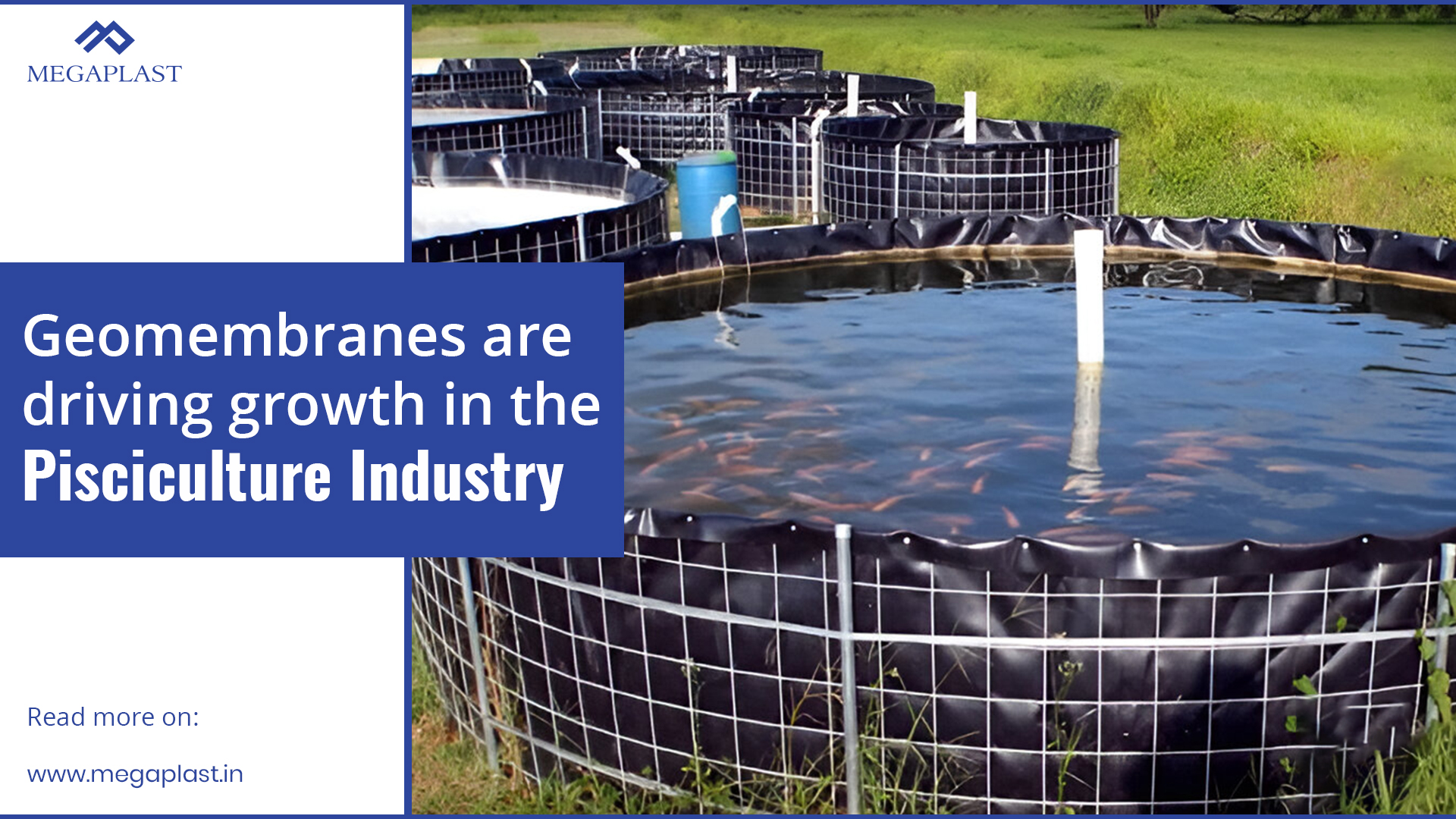
Aquaculture, the controlled rearing of fish in ponds, is a crucial contributor to meeting the ever-growing global demand for seafood. However, traditional pond systems face challenges like water loss, poor water quality, and disease outbreaks. This is where Megaplast geomembranes emerge as a revolutionary solution, fostering sustainable and efficient fish farming practices.
Earthen ponds, a common approach in pisciculture, are susceptible to seepage, leading to significant water loss, especially in drier climates. This not only impacts fish health but also translates to increased pumping costs and reduced overall farm productivity. Additionally, traditional ponds are vulnerable to contamination from soil runoff and organic matter build-up, deteriorating water quality and posing a threat to fish populations through stress and disease outbreaks. Frequent cleaning of these ponds further disrupts the delicate pond ecosystem. These challenges often translate to lower fish yields, increased operational costs, and ultimately, reduced profitability for pisciculture operations.
Megaplast geomembranes, specially formulated high-density polyethene (HDPE) liners, offer a solution to these longstanding challenges. They significantly reduce seepage, minimising water loss and evaporation, and ensuring consistent water levels in ponds. This translates to reduced pumping costs, water conservation, and ultimately, a more sustainable approach to fish farming.
Furthermore, geomembranes create a barrier between the pond bottom and the surrounding soil, preventing contamination and organic matter infiltration. This promotes cleaner water, essential for healthy fish growth and reduces the risk of disease outbreaks. The smooth surface of geomembranes makes it difficult for harmful bacteria and parasites to thrive, further minimising disease risk. Additionally, the ease of cleaning geomembrane ponds allows for better hygiene and disease prevention.
By providing a clean and stable aquatic environment, Megaplast geomembranes contribute to improved fish health, growth rates, and overall farm productivity. Farmers can expect higher yields and better quality fish, leading to increased profitability. Reduced water loss, improved water quality, reduced disease outbreaks, and higher fish yields all contribute to a significant financial boost for pisciculture operations. Geomembranes offer a compelling return on investment over time.
Beyond the core benefits, Megaplast geomembranes boast additional advantages. They are UV-resistant and built to last for years, minimising replacement costs and ensuring long-term value. Additionally, geomembranes can be custom-designed to fit ponds of various shapes and sizes, making them suitable for diverse aquaculture operations. Most importantly, Megaplast geomembranes contribute to a more responsible and eco-friendly aquaculture industry by conserving water and promoting sustainable fish farming practices.
As the global demand for seafood continues to rise, Megaplast geomembranes offer a compelling solution for the future of pisciculture. With superior water management, improved water quality, reduced disease risk, and increased profitability, they empower farmers to raise healthy fish in an environmentally responsible manner. Megaplast geomembranes are poised to play a vital role in ensuring a sustainable and efficient future for the pisciculture industry.
For more information. Please complete this form.